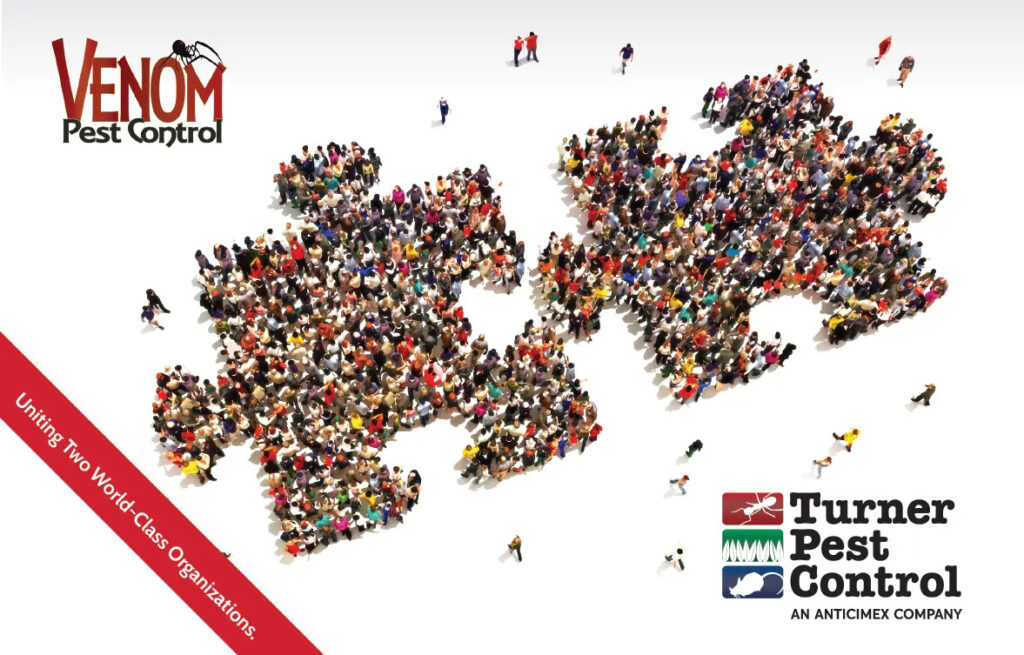Before any of us were born, parents were already telling children to “Sleep tight and don’t let the bed bugs bite.” Experts debate the history and meaning of this saying—yes, even at universities—but it’s the “sleep tight” portion that’s being discussed.
There’s no question what the “don’t let the bed bugs bite” part meant. Parents didn’t want the pests that hid in mattresses—ones often “stuffed with straw, shredded corn husks, or down feathers”—to harass their loved ones as they slumbered.
No matter when that saying originated, families today have that same wish—to protect everyone from bed bug bites. To help, we’ll share information about this pest along with prevention and treatment strategies that really work.
If you already know that you need bed bug treatment, just contact us online for your free inspection.
Scientific Bed Bug Overview
The bed bug (Cimex lectularius Linnaeus), the University of Florida notes, feeds off of the blood of people, as well as chickens and bats; on occasion, they’ll also feast on domesticated animal blood. You clearly don’t want them in your home—and prevention is infinitely preferable to needing to clear the house of this biting, blood-sucking pest.
Bed Bug Prevention Strategies
First, try to prevent bed bugs from getting into your house. They’ll travel inside in creative ways, including on boxes and bedding, luggage and briefcases—even shoes and clothing. Preventative tips include:
- Thoroughly inspect second-hand purchases, especially mattresses and box springs, before bringing them inside. It can make sense to have them professionally inspected by a pest control expert first.
- Encase your mattresses and box springs with a high quality protective cover. Inspect it regularly for tears or holes.
- When you travel, consider putting your luggage inside of large plastic bags to keep the bed bugs out.
- When you get home, keep the luggage in the bags in your garage. Wash clothes and linens in hot water and then put them directly into your dryer on a high heat setting.
- When you bring the suitcases in, vacuum them and use a flashlight to inspect them for any bed bug presence.
- Vacuum regularly and, when done, put the sweeper bag in a trash bag. Tie it up and put the bag into an outside garbage can.
- Eliminate stacks of newspapers or magazines, piles of old boxes, and so forth from your home. Bed bugs navigate towards clutter because they make perfect hiding spots.
- Don’t place beds near a wall and don’t allow bedding to touch the floor.
- Keep clothing off the floor and off the beds.
- Seal up cracks or crevices where bed bugs could hide.
Following these procedures can make a big difference, helping you to keep bed bugs out. It’s virtually impossible to foolproof a home in this way, though, since the bugs are quite small and very crafty. So, as part of your bed bug control strategies, regularly inspect for them.
Bed Bug Inspections
Check your mattress regularly because this is where you’ll find bed bugs most often. When you remove your bedsheets for washing, check them for blood spots, which may be dark colored. Then, inspect the four corners of your mattress and box springs for any signs of the critters. Also look along the seams, edging, and other parts of the mattress and box springs.
Check the headboards and bed joints along with night stands and other pieces of furniture near the beds (don’t forget picture frames). Inspect upholstered furniture, baseboards, and so forth where bed bugs might find a place to hide. When doing your inspection, also look at pet bedding.
Because bed bugs hide so well, consider having annual bed bug inspections conducted by professionals.
Bed Bug Problems
If you suspect or know that you have an infestation, this isn’t a new problem and you’re not alone. In the Paisley Caves in Oregon, archaeologists found evidence that could indicate human occupation from as far back as 14,300 years ago. Those caves also contain bones from ancient horses, camels, and more—and three different species of bed bugs that date between 5,100 and 11,000 years ago.
These species would have fed on bat blood and, at some point, when humans lived in caves with infected bats, two different kinds of bed bugs—the Cimex lectularius and the Cimex hemipterus—began to feast on human blood. By the time that people were immigrating to the Americas by ship, bed bugs were such a big problem that some ship captains may have forbidden passengers from bringing along bedding materials.
By the early twentieth century, bed bugs were a significant challenge in the United States. Then, when an Austrian scientist developed a chemical compound called dichlorodiphenyltrichloroethane (DDT), the bed bug problem was solved. Or, at least for a little while, until people realized how harmful DDT was to the environment.
A bed bug resurgence began about twenty years ago in part because DDT no longer suppressed their population and in part because other insecticides just didn’t seem as effective. Other reasons included how people traveled between states and countries, sometimes bringing more bed bugs with them. Plus, as people enjoyed antique shopping and thrift shop buying, the risk of taking bed bugs home increased.
Finally, because plenty of people were born in the decades when this insect wasn’t a problem, they may not recognize a bed bug when they see one.
Identifying Bed Bugs
These are small insects, brown, flat, and oval. Adult ones are about the size of an apple seed or Lincoln’s head on a penny. When this bug is immature (in the nymph stage), they’re even smaller. After they feed, their bodies become more swollen and take on a reddish hue.
Because of their size and because they’re usually more active during the night, you may struggle to spot the pest. What you may see, instead, are signs of their presence. If you have itchy bites, whether in a row or in a more random pattern, these could be bed bug bites—especially if they appear on areas of the skin that’s exposed while you sleep. People typically don’t wake up while being bitten because this bug’s saliva contains an anesthetic.
These bites can become infected. If that happens, then you will likely need to seek medical help.
Other infestation signs include spots on sheets or pillowcases. These can be blood stains or bed bug feces. You may also see shed skin or egg shells—or notice an unpleasant musty odor.
If you suspect a bed bug presence, then it’s important to be proactive in addressing the infestation. Although bed bugs may not reproduce as quickly as some pests, each adult female lays, on average, an egg per day. That sounds small. But an infestation will include more than one female and it only takes an egg ten days to hatch and about five to six weeks to mature into a reproducing insect themselves.
Bed bugs, at a minimum, can last for months without a meal (so starving them isn’t the solution). In some weather conditions, they can even last a year without food.
Looking to the Future
In 2016, Science Daily shared research from thirty-six different institutions that originally appeared in a journal (Nature Communications). This research shows that, someday, we may be able to permanently get rid of the bed bug problem. The scientists focused on insect genome sequencing—in other words, a roadmap of this bug species’ DNA and how it’s ordered—and it revealed how this pest has unique biology. More specifically, there are 805 possible examples of when past DNA issues had been repaired by using genetic material from bacteria. The researchers had already confirmed the specifics of six of these bacterial repairs by 2016.
Someday, this genetic information found in bedbugs may actually help us to understand how to stop them from biting people. How? It may help scientists to discover what bacteria the bedbugs need to continue to survive—and then we could deprive them. Plus, this report suggests that scientists can determine where a bed bug has been, where they can go, and what blocks them.
Now here’s what we can do right now to rid your home of this pest.
Bed Bug Treatments
When you’ve got an infestation, contact Turner Pest Control. Premier hotels, medical facilities, offices, and more count on us to keep their buildings bed-bug free—and we bring the same expertise when we’re providing residential bed bug treatments.
Although some people may believe that bed bugs only settle in unhygienic conditions, they aren’t picky. They are just as happy in clean houses because they don’t feed on decomposing material or any other form of dirt. They feed on blood.
This insect can find carbon dioxide, which is what humans breathe out, and respond to the moisture and heat of their food source. So, they can be found in even the most well kept homes.
When you contact Turner Pest Control, here’s our process:
- We’ll thoroughly inspect your home to confirm the presence of bed bugs (rather than, say, ticks or fleas) and discover where they’re hiding out: mattresses, box springs, bed frames, furniture joints, outlet covers, baseboards, and more.
- Our experts will make customized recommendations for your specific situation.
- For your convenience, we’ll provide fast service, in and out of your home within four hours, so that you and your family won’t need to stay out for long.
We offer two types of bed bug treatments and our trained technicians will explain how each of them works and how they will rid your home of this unwanted pest. Plus, we offer a comprehensive prevention plan.
Heat Bed Bug Treatments
Thermal Remediation® will kill bed bugs throughout their lifecycle in just one treatment. Using high heat, there is no chemical fumigation involved. This means that you don’t have to worry about any toxins being left behind, and you, your family, and your pets can return as soon as this bed bug treatment is complete. Using heat allows us to penetrate the tiniest cracks and crevices.
Chemical Bed Bug Treatments
With this approach, after our experts confirm where the pests are hiding in your home, we’ll use a combination of the latest insecticide dust and residual contact treatments. After the initial application of this thorough and effective bed bug treatment, we’ll provide two follow up visits: one a week after and, the second, the week after that.
SMART TurnerGuard Termite and Pest Control
With the SMART TurnerGuard Termite and Pest Control plan, you’ll receive all-in-one pest protection. As part of that, you’ll benefit from bed bug control and, as needed, extermination services.
Choose Turner Pest Control for Your Bed Bug Treatments
In 2021, we marked 50 years in business, which is half a century of growth, service, and innovation. Our fifteen branches serve customers throughout Florida—more than 60,000 of them. Turner Pest Control is one of the fastest growing companies in Florida and we rank in the country’s top 100 pest control companies.
When you need bed bug treatments or another kind of pest control, you can rely upon our professional services that are personally delivered with promptness, respect, and courtesy. Our trained technicians must pass stringent background checks before they work for us.
Turner Pest Control offers affordable programs to fit your budget along with eco-friendly products. Plus, when you choose us for your pest control, there are never any contract cancellation fees.
In addition, Turner Pest Control received the QualityPro Certification designation, something that fewer than three percent of the pest control providers in the United States can say. Awarded by the National Pest Management Association, this means that you’re receiving services from a time-tested company that has proved its excellence.
This certification symbolizes our commitment to protecting our customers, people, and environment with the QualityPro designation built on the principles of Business Operations, Environmental Stewardship, Consumer Relations, and Technician Training.
To get started with your bed bug treatments and other services, please contact us online or call 800-225-5305.


